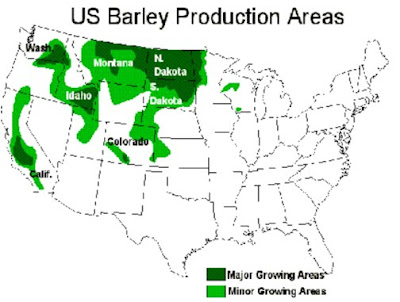“If you are a devout Israelite, you trust that the LORD has led you to a land with all four seasons, goats (e.g. mountain goats), sheep (e.g. bighorn sheep) and various cattle (e.g. bison), a place where you can plant barley and grapes with no impediment to keeping all of the seasonal ordinances of the Law of Moses. (2 Nephi 5:10).”
First of all, the reference in 2 Nephi has to do with keeping the Law of Moses. It does not indicate, nor have any reference to, seasons, animals, nor planting, as the way it was used in the above might suggest. While the Law of Moses may well have had seasonal ordinances in Israel, there is no mention or suggestion that such was the purpose of the Law among the Nephites. In fact, the scripture listed above states: “And we did observe to keep the judgments, and the statutes, and the commandments of the Lord in all things according to the law of Moses.” Judgments, statutes, and commandments does not imply the petty seasonal ordinances of the Jews, but those commandments in reference to a life style—the 10 Commandments being the base of the Law of Moses.
In 2 Nephi 11:4 it states: “Behold, my soul delighteth in proving unto my people the truth of the coming of Christ; for, for this end hath the law of Moses been given; and all things which have been given of God from the beginning of the world, unto man, are the typifying of him.” Again, this implies that the Law of Moses which the Nephites kept was not filled with the do’s and don’ts of Jewish religious laws, but as a preparation for the future coming of the Christ—a fact that was well known among the Nephites (3 Nephi 2:2,7-8) and highly anticipated (3 Nephi 3:1; 5:2; 6:20; 7:15,21).
Alma made this quite clear: “Yea, and they did keep the law of Moses; for it was expedient that they should keep the law of Moses as yet, for it was not all fulfilled. But notwithstanding the law of Moses, they did look forward to the coming of Christ, considering that the law of Moses was a type of his coming, and believing that they must keep those outward performances until the time that he should be revealed unto them. Now they did not suppose that salvation came by the law of Moses; but the law of Moses did serve to strengthen their faith in Christ; and thus they did retain a hope through faith, unto eternal salvation, relying upon the spirit of prophecy, which spake of those things to come.” (Alma 25:15-16).
To suggest that the Nephites’ purpose in keeping the Law of Moses had to do with any seasonal ordinances is once again extremely disingenuous, but necessary to the proving that the Great Lakes theory is the location of the Land of Promise. It is always a stretch for these theorists to try and show something regarding their model that cannot be supported by the scriptural record.
In another of this author’s points, he writes: “a place where you can plant barley and grapes.” This is, of course, an accurate point, for barley was grown in the Land of Promise and mentioned specifically “And we began to till the ground, year, even with all manner of seeds, with seeds of corn, and of wheat, and of barley, and with neas, and with sheum, and with seeds of all manner of fruits” (Mosiah 9:9). Of course, the barley eliminates Mesoamerica completely. Even John L. Sorenson acknowledged that, claiming Zeniff must have meant some other grain than barley.
But it is interesting that this author singled out barley, for wheat and corn are also mentioned. In the eastern U.S., only one type of wheat grows, and that is soft red winter wheat—and the only major crop area is in northwestern Ohio and a small area in central Michigan. However, spring wheat and duram wheat do not grow there at all, and the normal hard red winter wheat grows only in the Great Plains states, Montana and California.
 Growth of Barley in the U.S. According to the NOAA/USDA -- The National Oceanic and Atmospheric Administration in partnership with the U.S. Department of Agriculture)
Growth of Barley in the U.S. According to the NOAA/USDA -- The National Oceanic and Atmospheric Administration in partnership with the U.S. Department of Agriculture)Corn is grown in what is called the corn belt, which includes the states of Michigan, Minnesota, South Dakota, Wisconsin, Ohio, Illinois, Indiana, Iowa, Missouri, Kansas, and Nebraska. Barley, however, is not grown east of the Mississippi at all, centering mostly in the Dakotas, Montana, Idaho, Utah Washington and California, with a little in Colorado, Wyoming, and Nebraska. It is strange indeed that the author chose to mention where barley is grown as a major point, since it is not found in the Great Lakes area at all.
As for grapes, California grows 90% of the grapes in the U.S., with Long Island, New York, and Washington producing most of the rest. Special frost-resistant grapes introduced by German immigrants into Ohio and Michigan in the late 1800s accounting for a small amount. Grapes are usually grown in tropical and subtropical regions and extending into the temperate zones, which tends to exclude the Great Lakes area from almost all but one special variety. It should also be understood that grapes are not indigenous to North America at all, having been introduced here by way of the Mediterranean countries.
Thus, as can be seen, the special points introduced by this Great Lakes theorist in no way supports his Great Lakes model and, in many cases, actually eliminates it from consideration.




No comments:
Post a Comment